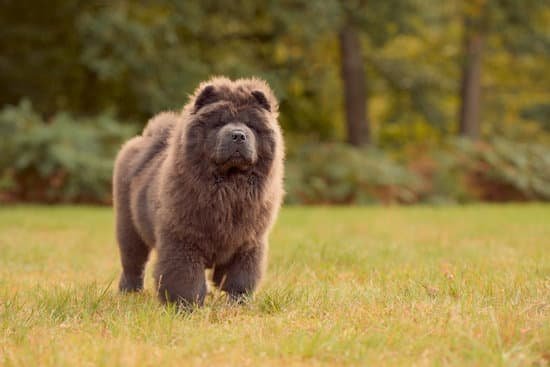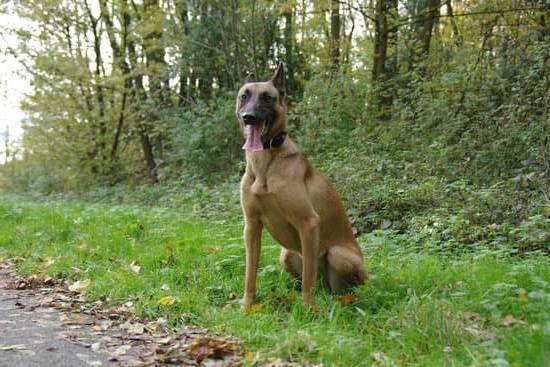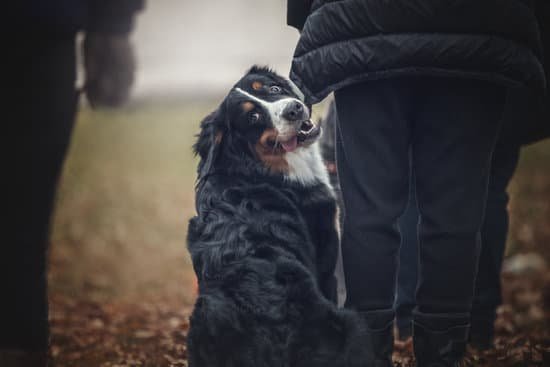Are you looking to train and bond with your furry friend? Look no further than the wide range of dog training supplies available to assist you. From collars and leashes to treats and rewards, there are countless tools and equipment designed to aid in your dog’s training journey. In this comprehensive guide, we will explore the essential training supplies for a well-behaved and happy pooch.
When it comes to effective dog training, choosing the right collar and leash is crucial. Whether you have a small puppy or a large adult dog, selecting the best collar and leash can make a significant difference in their behavior and responsiveness. Additionally, harnesses provide an alternative method for training, offering benefits for both the trainer and the four-legged trainee.
Positive reinforcement is a key aspect of dog training, and treats play a crucial role in this approach. We will discuss the importance of using treats as rewards during training sessions, as well as explore the best options for rewarding your pup. Additionally, we will dive into the use of clickers and whistles as effective tools for communication during training sessions. With these supplies at your disposal, you can enhance your dog’s learning experience and improve their behavior significantly.
Choosing the Right Collar and Leash
When it comes to choosing the right collar and leash for your dog, there are several options to consider. The type of collar and leash you choose can greatly impact the training process, so it’s important to make the right decision. Here are some factors to consider when selecting these essential dog training supplies:
- Material: Collars and leashes come in a variety of materials, including nylon, leather, and chain. Consider your dog’s size, strength, and behavior when choosing the material that will best suit your needs.
- Style: There are different styles of collars, such as flat collars, martingale collars, and prong collars. Each has its own purpose and benefits, so it’s important to research and understand which style is most suitable for your dog’s training needs.
- Fit: Proper fit is crucial for both the collar and leash. A collar should be snug enough that it won’t slip off but not too tight that it causes discomfort. Leashes should also be an appropriate length for training purposes.
It’s essential to choose a collar and leash that aligns with your training goals and methods. For example, if you’re practicing positive reinforcement techniques, a standard flat collar and standard leash may be sufficient. However, if you’re dealing with a strong or stubborn dog, a martingale collar or head halter may provide more control during training sessions.
When selecting a leash, consider whether you need a standard six-foot leash for basic obedience training or a longer lead for recall training in open spaces. Retractable leashes can provide flexibility during walks but may not be suitable for all training situations.
By carefully considering these factors and researching the best options for your dog’s breed and behavior, you can ensure that you have the right collar and leash to support effective training. Remember that every dog is unique, so take the time to assess your individual pet’s needs before making a decision on their training supplies.
Harnessing Success
When it comes to dog training supplies, harnesses are an essential tool for effectively training your furry friend. Using a harness during training provides several benefits, including better control over your dog’s movements and reduced strain on their neck and throat.
Additionally, a harness can help discourage pulling and jumping, making it easier to teach your dog good leash manners. When choosing a harness for your dog, it’s crucial to consider factors such as size, material, and adjustability to ensure the best fit and comfort.
To choose the right harness for your dog, consider the following options:
- Adjustable Harness: Opt for a harness with adjustable straps to ensure a snug fit without restricting your dog’s movement.
- Padded Harness: Look for a padded harness to provide maximum comfort for your dog, especially during longer training sessions or walks.
- Front-clip Harness: Consider a front-clip harness if your dog tends to pull on the leash, as this type of harness redirects their attention back towards you when they attempt to pull.
Incorporating a harness into your dog training routine can significantly improve the overall training experience and promote positive behaviors in your furry companion. When used in conjunction with other essential dog training supplies such as treats and rewards, clickers and whistles, and interactive toys and puzzle games, a well-chosen harness can contribute greatly to the success of your training efforts.
By providing comfort, control, and support for both you and your dog during training sessions, a quality harness is an invaluable asset in ensuring that both you and your four-legged friend enjoy the process of learning new skills together.
Treats and Rewards
When it comes to positive reinforcement training, treats and rewards play a crucial role in reinforcing desired behaviors in dogs. The use of treats as a reward helps to create a positive association with specific actions, making it more likely for the dog to repeat those behaviors. However, not all dog treats are created equal, and it’s essential to choose the best options for your furry friend.
When selecting treats for training purposes, it’s important to consider the size and texture of the treat. Treats should be small enough for quick consumption, especially during training sessions where multiple rewards may be given.
Additionally, soft and chewy treats are ideal as they can be easily and quickly consumed by your dog. Some popular options for training treats include small pieces of cooked chicken or turkey, freeze-dried liver, or commercial training treats that are specifically designed for this purpose.
It’s also crucial to take into account any dietary restrictions or allergies that your dog may have when choosing training treats. Some dogs may have sensitivities to certain ingredients such as grains or animal proteins, so opting for hypoallergenic or grain-free options may be necessary. By selecting high-quality, palatable treats that cater to your dog’s individual needs, you can effectively reinforce positive behaviors during training sessions.
| Training Treats | Description |
|---|---|
| Cooked Chicken or Turkey | Small pieces of cooked meat that are easily consumed |
| Freeze-Dried Liver | Nutrient-rich liver that provides a flavorful reward |
| Commercial Training Treats | Specifically formulated treats designed for use in dog training |
Clickers and Whistles
Understanding the Role of Clickers and Whistles
Clickers and whistles are popular tools used in positive reinforcement training for dogs. Clickers are small handheld devices that make a distinct clicking sound when pressed, while whistles produce a high-pitched tone. These tools are used to mark the exact moment when a dog exhibits a desired behavior, making it easier for them to understand which actions are being rewarded.
Using clickers and whistles in dog training can help to create clear communication between the trainer and the dog. They provide an immediate auditory cue that signals to the dog that they have performed the desired behavior, which can make training more effective and efficient.
Incorporating Clickers and Whistles Into Your Training Routine
When incorporating clickers and whistles into your dog training routine, it’s important to start by associating these tools with rewards. This can be done by using them in conjunction with treats or favorite toys. Whenever the clicker is sounded or the whistle is blown, immediately follow it up with a reward for your dog.
Once your dog understands that the clicker or whistle means they will receive a reward, you can start using these tools during training sessions. For example, if you are teaching your dog to sit on command, use the clicker or whistle as soon as they sit and then give them a treat. With consistent use, your dog will learn to associate these sounds with positive outcomes, making training more effective.
Using clickers and whistles in combination with other essential dog training supplies can help create a well-rounded and successful training experience for both you and your furry friend.
Training Pads and Litter Boxes
House training is an essential part of raising a well-behaved and obedient dog. It not only prevents accidents in the house but also establishes a routine for your furry friend. Training pads and litter boxes are indispensable tools in the house training process, making it easier for both you and your dog.
Importance of House Training
House training teaches your dog where it’s appropriate to relieve themselves, whether that’s outside in the yard or inside on a designated pad or litter box. It also helps prevent your dog from developing bad habits such as soiling in the house. By establishing a consistent routine with proper training supplies, you can help ensure that accidents are kept to a minimum, and your home remains clean and odor-free.
Best Supplies for House Training
There are various options when it comes to house training supplies, including disposable training pads, reusable pads, and litter boxes designed specifically for dogs. Disposable training pads are convenient and absorbent, making cleanup quick and easy. Reusable pads offer a more environmentally friendly option while providing similar absorbency.
Litter boxes designed for dogs come with synthetic grass or special inserts that make them appealing to use. When selecting supplies for house training, consider the size of your dog, the space available in your home, and the ease of cleaning and maintenance of the supplies.
Interactive Toys and Puzzle Games
Interactive toys and puzzle games can be valuable tools in your dog training arsenal. These types of toys and games are not only fun for your furry friend, but they also provide mental stimulation and can aid in their training process. Using these supplies can help keep your dog engaged, focused, and entertained while learning new commands and behaviors.
When selecting interactive toys for your dog, consider their size, breed, and temperament. For example, a high-energy dog may benefit from toys that require physical activity or provide a challenge to keep them occupied. On the other hand, a smaller or less active dog may prefer puzzles that stimulate their mind without requiring too much physical exertion.
Puzzle games, such as treat-dispensing toys or interactive feeding bowls, can also be used to reinforce positive behaviors during training sessions. By incorporating these games into your training routine, you can encourage problem-solving skills and enhance the bond between you and your canine companion.
In addition to providing mental stimulation, interactive toys and puzzle games can also serve as a form of reward for good behavior. After a successful training session, allowing your dog to play with an engaging toy or solve a puzzle can reinforce the positive association with their achievements. This positive reinforcement can contribute to better results in your dog’s training journey.
| Interactive Toys | Puzzle Games |
|---|---|
| Provide mental stimulation | Encourage problem-solving skills |
| Aid in training process | Reinforce positive behaviors |
| Keep dogs engaged and focused | Enhance the bond between owner and pet |
Grooming and Cleaning Supplies
In conclusion, the proper grooming and cleanliness of your dog play a significant role in their training and overall behavior. As we’ve explored in this comprehensive guide, dog training supplies go beyond just collars and leashes. Grooming and cleaning supplies are essential for the well-being of your pet and can greatly contribute to their success in training.
By ensuring that your dog is clean and well-groomed, you are providing them with the best possible foundation for learning and following commands. Regular grooming not only keeps them healthy but also helps to prevent behavioral issues that may arise from discomfort or neglect. From brushes and shampoos to nail clippers and ear cleaners, having the right grooming supplies on hand is crucial for maintaining a happy, well-behaved dog.

Welcome to the blog! I am a professional dog trainer and have been working with dogs for many years. In this blog, I will be discussing various topics related to dog training, including tips, tricks, and advice. I hope you find this information helpful and informative. Thanks for reading!





